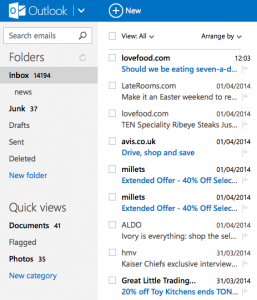Let’s face it, subject lines to most marketers are an after thought. Hours are spent in the planning stage of your email campaigns, then comes the design which can be 15-30 hours work; getting the images and layout right whilst ensuring everything is optimised for every device – all the while still keeping within the brand guidelines.
Then there is the copy. A painstaking process of making sure the message is just right and the grammar correct, usually with multiple edits along the way. It all takes time. You then have to get it coded and that’s another half a day! You render test it across all sorts of browsers and devices (more time) and then there’s the subject line. Someone in the marketing team, often the person setting up the email, takes 30 seconds coming up with a subject line and tests it to the group. A manager decides to change it based on their personal opinion and it goes live. That subject line took all of 90 seconds to become live while the rest of the process took days.
With email, the saying; ‘you only get one chance to make a first impression’ couldn’t be further from the truth. Every time you send an email, you get the chance to make a new first impression and whether you take advantage of this or not can make a massive difference to your bottom line. Let’s say your current email opens at 20%, you get 10% click-through and those clicks convert to £50,000 of revenue. Let’s now imagine that you put some time and effort into crafting a killer subject line but that killer subject line only increased your opens to 22%, is that worth it?
The answer is a resounding yes, as that 2% is actually a 10% increase. If the rest of your metrics hold true you now make £55,000 from your email instead of £50,000. With a weekly campaign that’s £250,000 a year. At that rate you could employ three copy writers just to sit and think up killer subject lines!
4 tips that work.
1. Personalisation
This is still worth doing. It clearly doesn’t have the effect it had 10 years ago when it could account for a 26-27% growth in opens but it can still have an impact. Personalisation doesn’t just mean a name – anything that you know about your data can be used for personalisation. So if you are using dynamic content in the copy of the email, use the same dynamic content ideas to personalise your subject line. For example; if you are a retailer and know that I click on a specific type of product on a regular basis then insert something relating to those products in the subject.
2. Characters
Using unicode characters in your subject line also makes it stand out in the inbox, although these have been around for a while now they can still be fun and encourage opens. Again if you are a retailer, make them relevant to seasonal offerings, i.e. if it’s valentines use ♥, if it’s Christmas maybe a ❄. You will know what works best for your business, just find the appropriate unicode character.
Below is an example of both personalisation and Unicode characters in the same subject line from Purple Parking.
3. Emotive words
Use emotive words to help drive opens. Things like “Your order – Important information” is going to get higher opens than “Thanks for your order”. “Discounted iPads – Up to 20% off today” is going to get better opens than “Electronic equipment sale”.
4. Front load your message
Many email clients cut off the subject line at 50 characters or less so the best subject line in the World won’t have impact after that. Put the important stuff at the beginning.
Subject lines shouldn’t be an after thought. When you have come up with two or three subject lines which you think are winners, test them. In most email marketing tools subject line testing is easy the winner can be automatically selected and rolled out to the remainder of your list based on opens or clicks. Drive up the open rate and drive up the revenue. It’s simple Maths.



